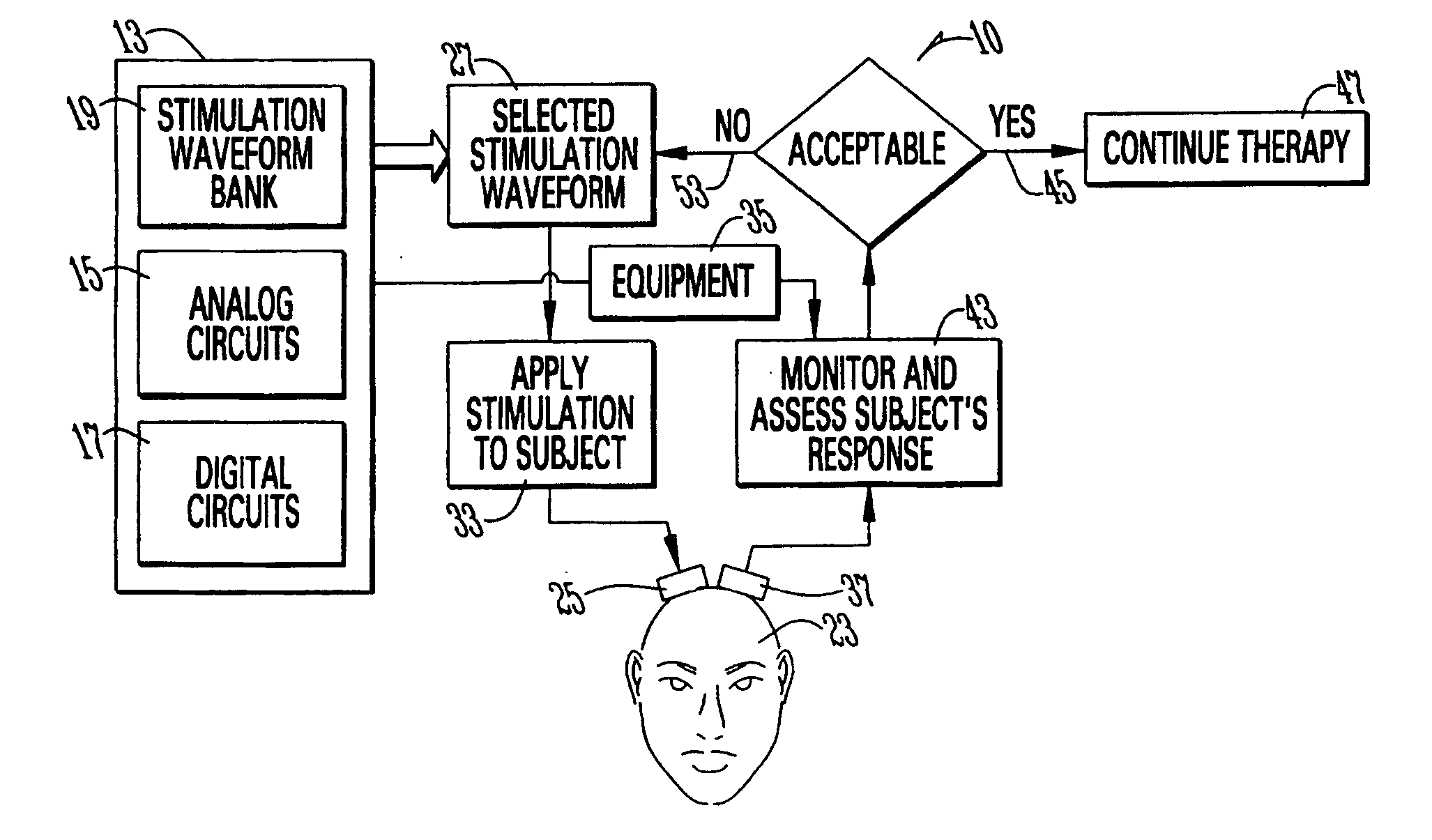Stimulation methodologies and apparatus for control of brain states
a brain state and stimulation technology, applied in the field of medical devices, can solve the problems of invalid or superfluous estimation of seizure probability, large bias, and reduce the probability of seizure generation, so as to increase brain excitability and the probability of seizure occurrence, and the safety limit is exceeded.
- Summary
- Abstract
- Description
- Claims
- Application Information
AI Technical Summary
Benefits of technology
Problems solved by technology
Method used
Image
Examples
example c
++ Code for Pseudo Random Noise Generation Using Autoregression
[0062]
fDbyt = fDt / fTau; / / parameters for generating autoregressionsrand( (unsigned)time( NULL) ); / / initializing the random seed double DC_Component; DC_Component = 0; iter = 1; dNoise[0] = 0.0; / / initial value of the series while (iter { dNoise[iter]=(((1−fDbyt) * (dNoise[iter−1] + fSig*sqrt(2*fDbyt)*rand( )))) / 16; DC_Component += dNoise[iter]; iter++; } / / removing DC component from the noise DC_Component / = ( m_uNoiseDuration−1 ); for(unsigned j =1;j { dNoise[j]−= DC_Component; }
PUM
 Login to View More
Login to View More Abstract
Description
Claims
Application Information
 Login to View More
Login to View More - R&D
- Intellectual Property
- Life Sciences
- Materials
- Tech Scout
- Unparalleled Data Quality
- Higher Quality Content
- 60% Fewer Hallucinations
Browse by: Latest US Patents, China's latest patents, Technical Efficacy Thesaurus, Application Domain, Technology Topic, Popular Technical Reports.
© 2025 PatSnap. All rights reserved.Legal|Privacy policy|Modern Slavery Act Transparency Statement|Sitemap|About US| Contact US: help@patsnap.com



